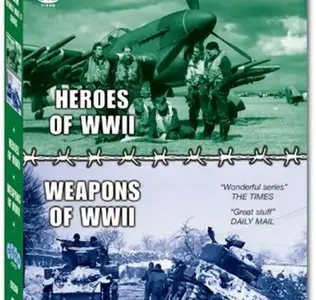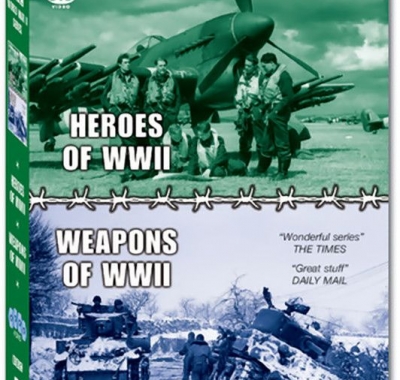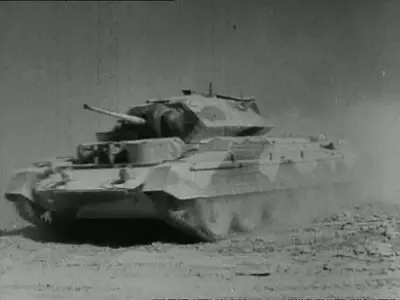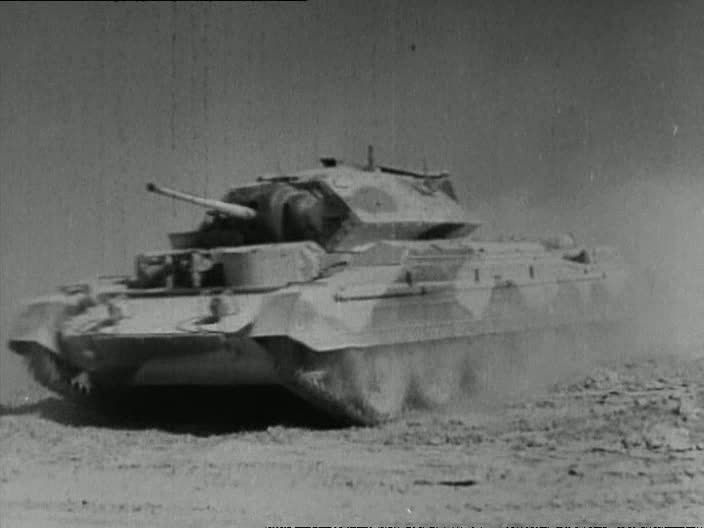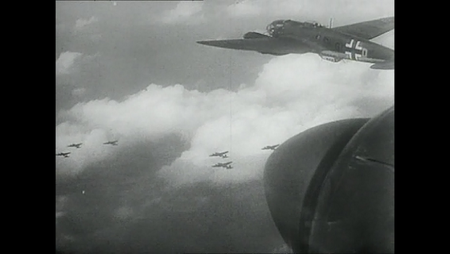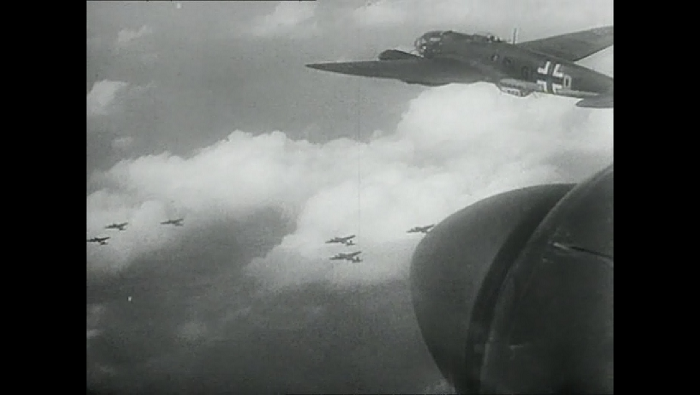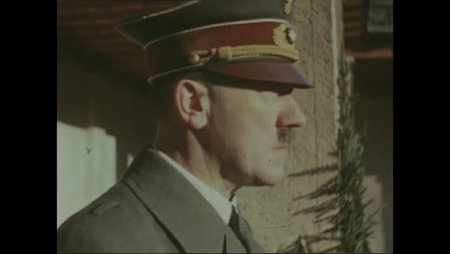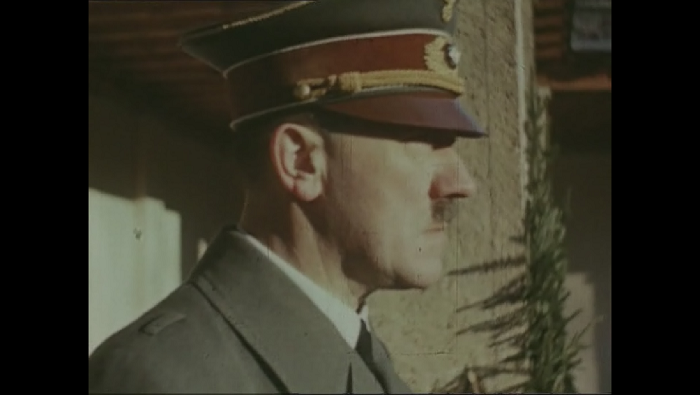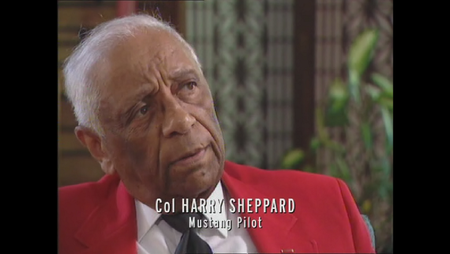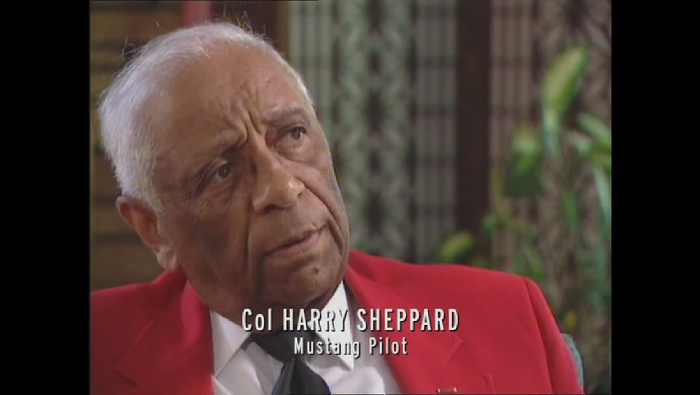BBC - Heroes and Weapons of WWII (2003)
DVDRip | English | AVI/XVID 25.000 fps 3048 Kbps | 704x528 | AC3 192 Kbps 48.0 khz | 10x23mn | 20x550 MB
Genre: Documentary
DVDRip | English | AVI/XVID 25.000 fps 3048 Kbps | 704x528 | AC3 192 Kbps 48.0 khz | 10x23mn | 20x550 MB
Genre: Documentary
The heroes on the battlefield, were matched by their civilian counterparts, who helped to liberate the free world by deciphering enemy codes, designing better aircraft and inventing war-winning machinery and ordnance. From pathfinding pilots to scientists, from the officers confronted with Hitler's atrocities at Belsen to the inventors of radar ; they all played a part in hastening the end of the most cataclysmic conflict ever. In 1939, the world went to war using obsolete weaponry. In order to gain supremacy it was necessary for an army of designers, inventors and manufacturers to develop and manufacture more and more sophisticated killing machines. In this series "WEAPONS OF WORLD WAR II" the development of each weapon system is addressed from the outbreak of war through to its peak in 1945.
Part 1: The Men Who Invented Radar
Radar gave British air defence the edge during the Battle of Britain and helped save Britain from invasion. But who were the electronic boffins behind its development in the 1930s and 40s? This programme reveals the technological race between Britain, Germany and America to create the most effective radar and how radar also helped Britain defeat the U-boat menace.
Part 2: The Man who Designed the Spitfire
The Spitfire is perhaps the most famous fighter plane of World War II, being a key element in winning the battle of Britain. But who designed it? R J Mitchell was a sickly inventor who created the Vickers Supermarine Schneider trophy-winning seaplane of the 1930s. It was this aircraft which was transformed into the battle-winning Spitfire just weeks before its inventor died.
Part 3: The Man who Stood Up to Hitler
By 1944, German generals could see that Hitler was leading them on a path to destruction, but who would stop him? In July 1944, Colonel Count Claus von Stauffenberg placed a bomb in a briefcase beside Hitler. The room exploded and Stauffenberg made his escape, thinking Hitler was dead. But the dictator was not and savage retribution followed.
Part 4: The Men who Cracked Enigma
Enigma was the encoding machine of the German army - break the code and you could win the war. Polish agents sent a captured machine to the British and at Bletchley Park, using the genius of men like Alan Turing, a team of cryptanalysts broke its code, giving valuable advanced intelligence to the Allies throughout the war.
Part 5: The Men who Sank the Bismarck
Completed in 1940, the Bismarck was widely regarded as the most powerful warship in the world. In April 1941, Admiral Tovey of the British Royal Navy detected an attempt by the Bismarck to break out into the Atlantic and the hunt was on. In a first battle, the Bismarck sank HMS Hood. But Tovey used radar to track her down again and finally she was surrounded by British heavy warships and pounded into submission.
Part 6: The Man who Saved Britain's Cities
In 1940, German bombers were ready to bomb Britain into submission and they were aided by the use of radio beams which told them exactly where to drop bombs at night. Dr R V Jones of British Air Intelligence was tasked with defeating this high-tech warfare. Ingeniously, he devised counter-beams which put the Germans off target.
Part 7: The Man who Hoodwinked Hitler
How could one dead man save the lives of thousands of Allied soldiers? Ewen Montagu knew how and devised a cunning deception in which the body of a dead officer was washed ashore in Spain with false information about Allied landings in the Mediterranean. Hitler took the bait and was poorly prepared for the Allied invasion of Italy. NMP has uncovered exclusive new information on the identity of the body.
Part 8: The Men who Liberated Belsen
In April 1945, British troops walked through the gates of Belsen, the notorious concentration camp. What they saw shocked the world. Richard Dimbleby and other Allied correspondents made sure through radio broadcasts and unique film footage that the world knew about the dreadful crimes committed by Hitler and his Nazi henchmen.
Part 9: The Men who Lit Up Germany
At first, Allied bombing raids on Germany were highly inaccurate, but then an elite force of night-bomber navigators were trained. They flew before the main bombing raids, marking targets with different coloured flares. It was highly hazardous work, but helped make Allied bombing raids significantly more effective.
Part 10: The Men Behind D-Day
In 1944 the Allies knew that they must invade Occupied Europe to free millions from Nazi tyranny. But the Nazis knew they were coming. The only question was when the attack would take place, and where. This programme reveals the inventive and often bizarre methods that were used to mislead the Nazis. Double agents spread bogus invasion plans, fake armies were mustered in the south of England and elaborate methods of breaking through Hitler's Atlantic wall were developed.
Part 11: Tanks
Tank development was dramatic in World War II. From pre-war light tanks, we see the emergence of the monster tanks such as the legendary Panthers and King Tigers of 1944/45. But were the German tanks over engineered and too vulnerable to breakdown? Lighter, simpler tanks such as the Russian T-34 and the American Sherman overwhelmed German tank formations with their sheer numbers. Was quantity more important than quality?
Part 12: Midget Submarines
From attacks on Pearl Harbor and Sydney Harbour, to the British Mediterranean Fleet and the Tirpitz, midget submarines played their part in some of the most gripping stories of the war. This programme recalls the heroic encounters of the men who piloted these midget craft towards their giant quarries.
Part 13: Gliders
When it was impossible for aircraft to land safely on enemy territory, gliders were the perfect answer for delivering special forces behind enemy lines. German paratroopers used gliders spectacularly to land on Belgian defences in 1940, while the British employed them to land soldiers in their effort to win a bridge over the Rhine at Arnhem in 1944.
Part 14: Aircraft Carriers
Giant aircraft carriers dominated the Pacific War between Japan and the USA. Pearl Harbor was launched to destroy US carriers but failed, while the battle of Midway - the turning point in the Pacific War - was won by US carriers delivering tremendous air strikes against Japanese battleships. This programme shows them in dramatic action.
Part 15: Fighter Bombers
By 1944, the Allied fronts in both western and eastern Europe had become faster moving and a new form of aircraft was needed to deliver swift, powerful attacks against German lines. This programme looks at the key fighter-bombers on all sides, including the American Thunderbolt, the Russian Sturmovik, and the British Hurricane developed to carry bombs and rockets for ground attack purposes.
Part 16: Heavy Bombers
At the outbreak of World War II, the only heavy four engined bombers in the war were either Russian or American. Soon the Short Stirling, the Avro Lancaster, and the Liberator were added to the B-17 Flying Fortress for devastating 1000 bomber raids over Germany. Ultimately, the pressurised B-29 gave the Americans the range and height they required in order to drop the Atomic bomb.
Part 17: The Battleship
At the beginning of World War II, battleships were seen as the key weapon at sea, their huge firepower dominated the waves but over the next six years their vulnerability was exposed by the submarine and aircraft. This programme looks at the great clashes of the ships such as Bismarck and King George V and the way in which the battleships' role changed to that of shore bombardment and escort work.
Part 18: Rockets
Rockets had a huge impact on World War II. Hand-held rocket-launchers such as the American bazooka and German panzerfaust enabled infantry to tackle tanks head-on. Multiple rocket launchers such as Stalin's Organ were a ferocious multiplication of firepower. The German V-2s were the world's first ballistic missiles. This programme shows exactly how these revolutionary weapons worked.
Part 19: Fast Attack Boats
Fast patrol boats, armed with torpedoes and machine guns, were the marine raiders of World War II. This programme looks at some of their most spectacular raids, as well as the incident involving future President of the United States, John Kennedy, in a clash with a Japanese destroyer.
Part 20: The Machine Gun
Unlike World War I, the machine gun did not dominate the battlefield of World War II, but it remained a highly potent weapon. Whether incorporated into the wings of fighter planes such as the Spitfire and Messerschmitt, or used by infantry on the battlefield as a submachine, it packed a considerable punch. This programme looks at its many forms and its influence on warfare.
General
Complete name : BBC.Heroes.and.Weapons.of.WWII.01of20.The.Men.Who.Invented.Radar.avi
Format : AVI
Format/Info : Audio Video Interleave
File size : 561 MiB
Duration : 23mn 39s
Overall bit rate : 3 317 Kbps
Video
ID : 0
Format : MPEG-4 Visual
Format profile : Advanced Simple@L5
Format settings, BVOP : Yes
Format settings, QPel : Yes
Format settings, GMC : 3 warppoints
Format settings, Matrix : Custom
Codec ID : XVID
Codec ID/Hint : XviD
Duration : 23mn 39s
Bit rate : 3 048 Kbps
Width : 704 pixels
Height : 528 pixels
Display aspect ratio : 4:3
Frame rate : 25.000 fps
Resolution : 8 bits
Colorimetry : 4:2:0
Scan type : Progressive
Bits/(Pixel*Frame) : 0.328
Stream size : 516 MiB (92%)
Writing library : XviD 1.2.1 (UTC 2008-12-04)
Audio
ID : 1
Format : AC-3
Format/Info : Audio Coding 3
Codec ID : 2000
Duration : 23mn 39s
Bit rate mode : Constant
Bit rate : 192 Kbps
Channel(s) : 2 channels
Channel positions : L R
Sampling rate : 48.0 KHz
Stream size : 32.5 MiB (6%)
Alignment : Split accross interleaves
Interleave, duration : 40 ms (1.00 video frame)
Complete name : BBC.Heroes.and.Weapons.of.WWII.01of20.The.Men.Who.Invented.Radar.avi
Format : AVI
Format/Info : Audio Video Interleave
File size : 561 MiB
Duration : 23mn 39s
Overall bit rate : 3 317 Kbps
Video
ID : 0
Format : MPEG-4 Visual
Format profile : Advanced Simple@L5
Format settings, BVOP : Yes
Format settings, QPel : Yes
Format settings, GMC : 3 warppoints
Format settings, Matrix : Custom
Codec ID : XVID
Codec ID/Hint : XviD
Duration : 23mn 39s
Bit rate : 3 048 Kbps
Width : 704 pixels
Height : 528 pixels
Display aspect ratio : 4:3
Frame rate : 25.000 fps
Resolution : 8 bits
Colorimetry : 4:2:0
Scan type : Progressive
Bits/(Pixel*Frame) : 0.328
Stream size : 516 MiB (92%)
Writing library : XviD 1.2.1 (UTC 2008-12-04)
Audio
ID : 1
Format : AC-3
Format/Info : Audio Coding 3
Codec ID : 2000
Duration : 23mn 39s
Bit rate mode : Constant
Bit rate : 192 Kbps
Channel(s) : 2 channels
Channel positions : L R
Sampling rate : 48.0 KHz
Stream size : 32.5 MiB (6%)
Alignment : Split accross interleaves
Interleave, duration : 40 ms (1.00 video frame)
Screenshots


